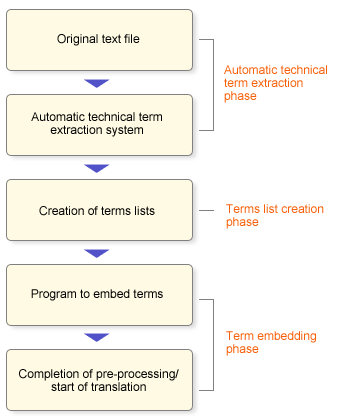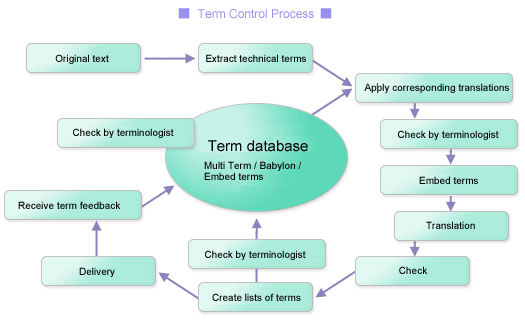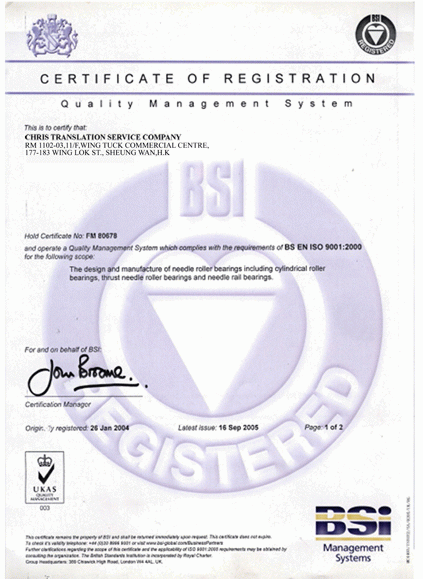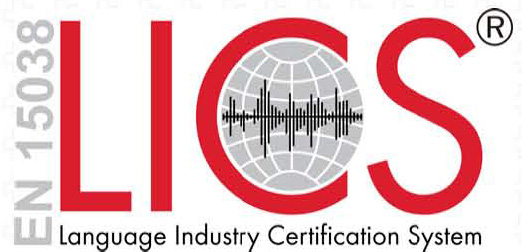 |
 |
|
 |
Translation Quality
(Terminology Control) of Chris Translation
|
To improve translation quality, we focused
on terminology control.
Chris Translation Term Control System
* To translate technical terms correctly for improvement of translation quality |
Chris translation service supports a wide range of document formats and
languages.
To produce correct, useful translations from a wide variety of fields, formats, and
languages, technical terms must be translated correctly and systematically, whatever
the field is.
Focusing on the importance of terminology control, Chris Translation has developed
effective processes and useful software to control technical terms based on the following
rules. By using these processes and software, we aim to further improve translation
quality and build and provide huge databases of technical terms to provide added value. |
| Rule 1. Use standard translations (or the most
common translations for newer terms) in that industry or field for technical terms. |
| (1) |
Use a wide range of dictionaries from general to technical dictionaries or from
standard to latest dictionaries. Check with experts in the field for standard translations
in the industry and use them. |
|
| • |
Select appropriate dictionaries from separate lists of dictionaries for each project
so that translators, editors, and proofreaders can work using the same dictionaries. |
|
| (2) |
Accumulate our own lists of technical terms. |
|
|
| (3) |
Make full use of Internet searches. |
|
| • |
Take advantage of Internet search knowhow accumulated through years
of experience in translation in order to search the Net for the latest words or examples
and determine appropriate translations. |
|
| Rule 2. Use the same, consistent terms in the same
document. |
| (1) |
According to the following pre-processing of terms (partially under testing
and verification at present), extract terms of frequent occurrence, technical
terms, and proper nouns from original text files and embed appropriate translations in the
files so that consistent translations can be produced.
|
|
n Pre-processing of Terms n |
|
Chris Translation pre-processing of terms, in which correct terms are embedded in text
to be translated in advance, ensures high quality translations even if the delivery time
is short, the translation volume is large, or complex layouts are included. |
|
 |
|
<<Automatic extraction of technical terms>>
The automatic technical term extraction system extracts technical terms from original text
files (Microsoft Office files).
<<Creation of a terms list>>
Give extracted technical terms parallel translations to create a dictionary of parallel
translations.
<<Embedding of terms>>
TermMakeUp, a program to embed terms, is used to embed translations of technical terms in
original text files at high speed.
* This mechanism allows critical terms, terms of frequent occurrence, and technical terms
to be translated correctly and consistently even if two or more translators are involved.
|
| (2) |
We use TRADOS
MultiTerm and other appropriate tools so that two or more translators
involved in the same project can use the same, consistent terms. |
| Rule 3. Use the same, consistent terms throughout
documents related to each other, a series of documents, or revised versions of documents. |
| (1) |
Build a mechanism that can specify documents throughout which the same, consistent
terms should be used. |
|
| • |
Chris Translation Information System (SIS), an order management
system developed by ANDROMETEC, an affiliated company, centralizes information on all
received orders and allows us to correctly search for past orders or projects related to a
new one. |
|
| (2) |
We use TRADOS
MultiTerm and other appropriate tools so that two or more translators
involved can use the same, consistent terms throughout two or more related documents. |
| (3) |
Accumulate terms lists for subsequent projects. |
|
| • |
Develop and accumulate Chris Translation own databases of terms and update and use
them continuously so that appropriate terms by customer, by customer
representative, by product, by industry, and by field can be extracted. |
|
| Rule 4. Communicate with customers about terms that
do not have standard translations. |
| (1) |
Exchange Q&A sheets with customers as appropriate as translation
is in progress. |
| (2) |
Attach a list of terms used to translations when they are delivered. |
| (3) |
Accumulate terms lists for subsequent projects. |
|
| • |
Develop and accumulate Chris Translation own databases of terms and update and use
them continuously so that appropriate terms by customer, by customer
representative, by product, by industry, and by field can be extracted. |
|
| Rule 5. To observe these 4 rules, build and use
IT-based processes and systems rather than manual ones. |
| (1) |
Build and use our own term control system so that certain terms can
be correctly translated in a semi-automatic, systematic manner. |

|






